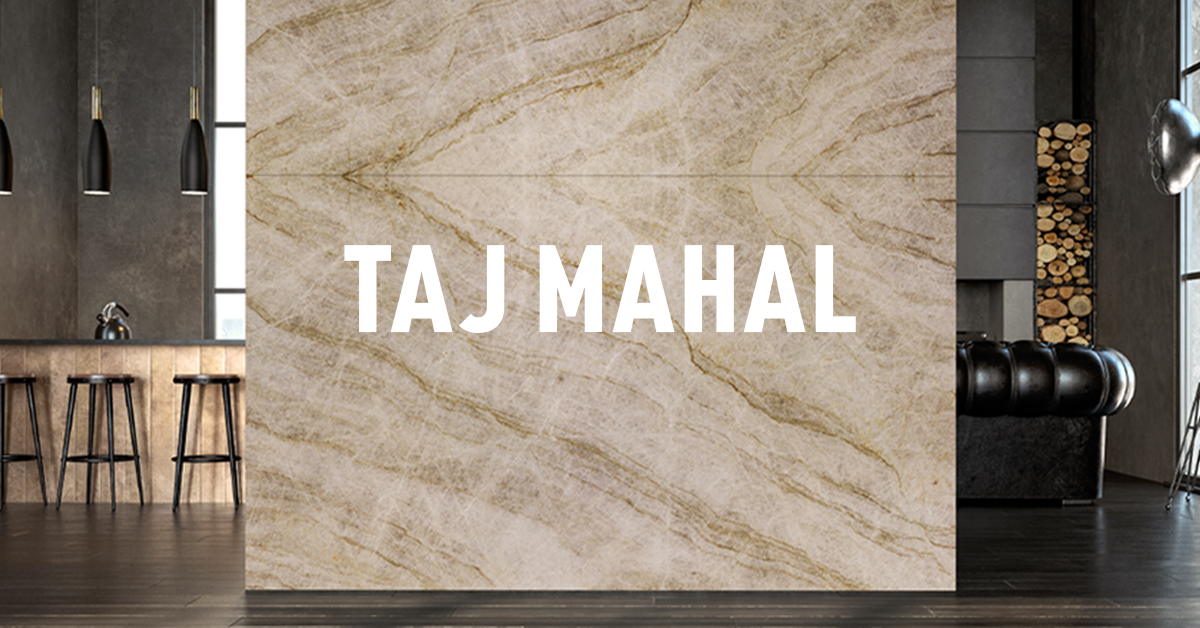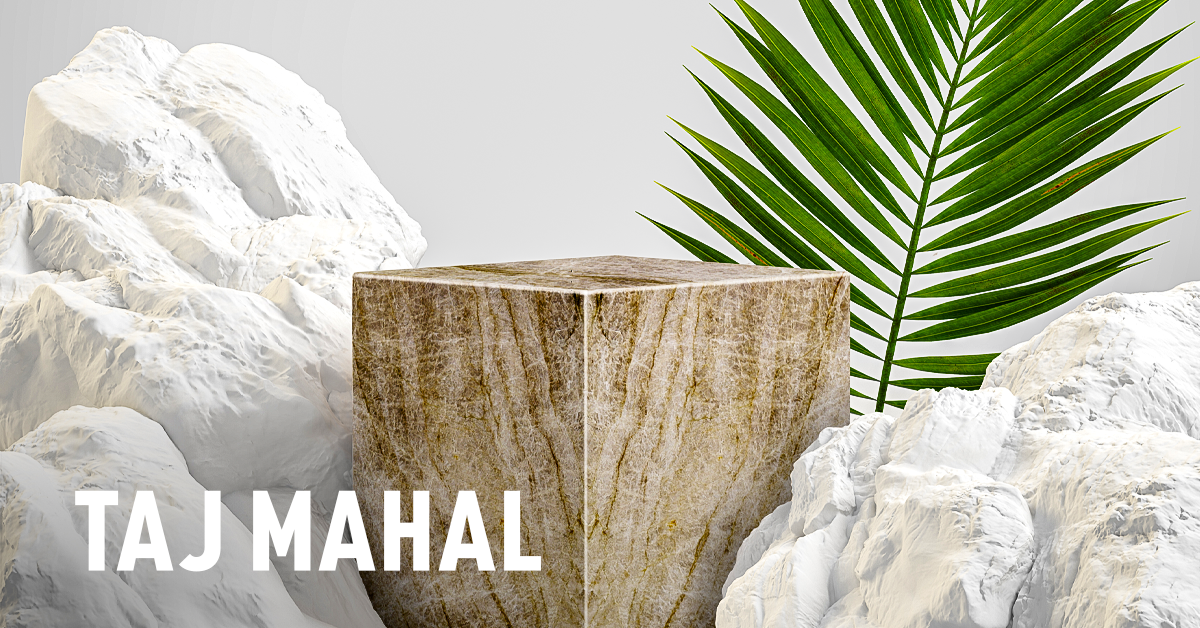Taj Mahal: marvelous quartzite

The elegance of the Taj Mahal captures the eye. It comes from Brazil and it’s refined and appreciated from all over the world for its particularities.
The name of the stone was borrowed by one of the Seven Wonders of the world: a famous Indian monument which has been declared UNESCO World Heritage Site, for its majesty and because is the symbol of the rich history of India, Taj Mahal.
What do these two wonders have in common?
One is the result of ancient architecture; the other is pure wonder of nature. Both are beauties to admire. They both have sand colour that changes depending on the light.

Taj Mahal is characterized by a light shade of luminous beige colour. The soft nuance is marked by dark wavy veins: they are between amber and metallic grey colour. Thanks to its light tones, it’s the best option of the precious white stones.
Its radiant and slightly transparent texture is extremely resistant to biomechanical agents. For this reason, it’s different from marbles but similar to granite. It doesn’t stain, for this reason is considered the perfect material to use in spaces that are difficult to keep clean.
The natural beauty of its surface has slight imperfections. Every slab of this stone has been treated with resin before the polishing phase to eliminate natural microfractures and porosities.
The polished and the brushed finish emphasise its natural characteristics like colour and design.
It has infinite applications but it’s ideal for interior design. For example, it’s used for wall coverings or floorings, for kitchen or bathroom spaces.
We are sure whatever is the space that will host this material, it will be full of energy, peaceful and relaxing atmosphere, rich of good vibes.
The elegance of a material is in its soul.
What do you think about this natural stone?


No Comments